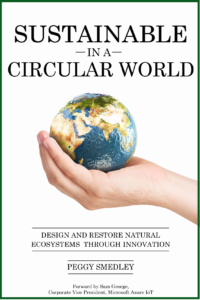Are we finally stalling with distracted driving or are we speeding up? Perhaps more importantly, what are we going to do about it? The answer to these questions could be life or death for construction workers who spend their days on the road and at highway jobsites.
I can’t help but ask, what will it take to keep us all so that we focus on the task at hand of driving when behind the wheel of a vehicle? To be very candid, I am saddened that I still have to educate people on the topic of distracted driving and report the number of deaths as a result of people driving while distracted. It is simply disturbing. We talk gun violence, abortion, mass shootings, but why aren’t we demanding real change when it comes to all the lives lost to motorists who drive distracted?
Okay, I will answer my own question. All too often, too many of us think it’s not us. We can multitask when behind the wheel. We are in control, until we are not. Until in a flash of just five seconds, a length of a football field, a blink of an eye, you have hit someone, something, and your life, the life of another, and their families, is changed, scarred, and altered forever.
We never think it is going to happen to us, but it does and when it does, we are so sorry, but it’s too late to change the carnage that has occurred. We tried to impart on you and everyone the need to put down that mobile device. There is no need to look at it at that very moment. Lives are changed forever. You can never go back. Someone is permanently hurt, or worse killed. You and their families will never, ever be the same. Unless, of course, you are heartless.
If you are reading this right now and saying it won’t happen to me, ask the many people I have interviewed on The Peggy Smedley Show or talked about in this blog for more than a decade. They would disagree wholeheartedly. Just ask: Joel Feldman, Lisa Robinson, Russ Martin, Mike Kellenyi, Phil Renaud, Pat Jones, Deborah Trombley, Tony Nicoletti, Jason Epstein, Irina Slavina, Jeff Haley, Jennifer Smith, Jim Flavell, Russ Rader, and David Pickeral.
That’s why when the GHSA (Governors Highway Safety Assn.) published a new study that creates a state highway safety office roadmap for combating distracted driving, I had to review it one more time. Let’s take a look at some of the numbers in the report.
An estimated 3,142 people lost their lives in the U.S., due to distracted driving in 2020, which is a 1% increase from 2019. Still, the numbers may actually be higher because the underreporting of distracted driving undercuts efforts to address it and creates false perceptions about the persistent and dangerous nature of it, according to the report.
Looking beyond fatalities, in 2019—the last year we have detailed information available—an additional 424,000 people were injured in motor vehicle crashes involving distracted drivers, and in all 15% of police-reported motor vehicle traffic crashes listed distraction as a factor. Here is another absolute terrifying number. A total of 566 nonoccupants were killed in distraction-affected crashes that year.
And of course, as we hopefully all know, distracted driving is a very widespread problem. GHSA has conducted experimental, observational, and naturalistic research that shows distracted driving is widespread, with drivers in the study engaging in potentially distracting activities in more than 51% of baseline driving time. Yikes.
What’s more, motor vehicle crashes are one of the leading causes of work-related deaths—and of course it is higher in construction because workers can be injured on the road and at highway jobsites.
A March 2022 Harris poll, Distracted Driving in America, commissioned by Advocates for Highway and Auto Safety and Selective Insurance, examined mobile device use while driving. It found 70% of licensed drivers indicated they used a mobile device for personal reasons while driving in the past 90 days. But among those whose jobs include driving the rate is even higher, with 86% reporting using a mobile device. Seriously here folks!
Candidly, these numbers don’t surprise me, anymore. Any passenger in a vehicle can look over to the other vehicles on the road with them and will likely see some sort of distraction within minutes of looking for it. I know I do. As I have long said on The Peggy Smedley Show, we need our eyes on the road, our hands on the wheel, and our minds on driving.
Here are the biggest challenges we face when it comes to addressing distracted driving, according to the GHSA. First, there is a disconnect between driver attitudes about the danger of driving distraction and their actual behavior, which is something I continue to talk about and have for many years. Second, there is difficulty enforcing distracted driving laws. Finally, there are inadequate penalties of non-existent distracted driving laws, according to GHSA.
But let’s be clear here, one of our biggest challenges comes from our lack of data. Much of our understanding of the role distracted driving plays comes from the data collected by law enforcement when investigating crashes or from studies like the one from Harris that asks people if they use devices in the car. That’s it. We need to improve the way we track, trace, and measure the data. We need greater transparency among all the agencies and the good news is that we have the technology to do it. We recognize that of course, an officer might not always be able to tell that distraction was a factor, so it goes underreported. But our devices have the ability to share that information and report it to the right authorities. We have the tools to share the data about distraction and we need to up the ante to get drivers to recognize the seriousness of driver distraction. It’s all about human safety.
Here is what the report recommends: distracted driving laws, education and public outreach, enforcement, infrastructure improvements, highway priorities and funding, leadership and partner support, and—I love this—better data collection.
I do think employer education is going to be key moving forward, but let’s also talk about the need for once again better data collection at the same time. What we really need is real, hard data collected from devices to give us a clear picture of who is driving distracted and when.
Specifically, the report suggests we need to collect state-level distracted-driving data and tailor countermeasures to address specific state needs. We need to expand data analysis beyond crash and citation data. We need more observational surveys to evaluate the impact of programs to see if they are working or not.
This data is available. We all carry connected devices with us in our pockets every day and that device often goes with us for car rides. These devices could theoretically collect the data we need to better understand distracted driving, ultimately saving the lives of thousands every year. It’s just a matter of whether we are willing to share that information.
Want to tweet about this article? Use hashtags #construction #IoT #sustainability #AI #5G #cloud #edge #futureofwork #infrastructure #distracteddriving


